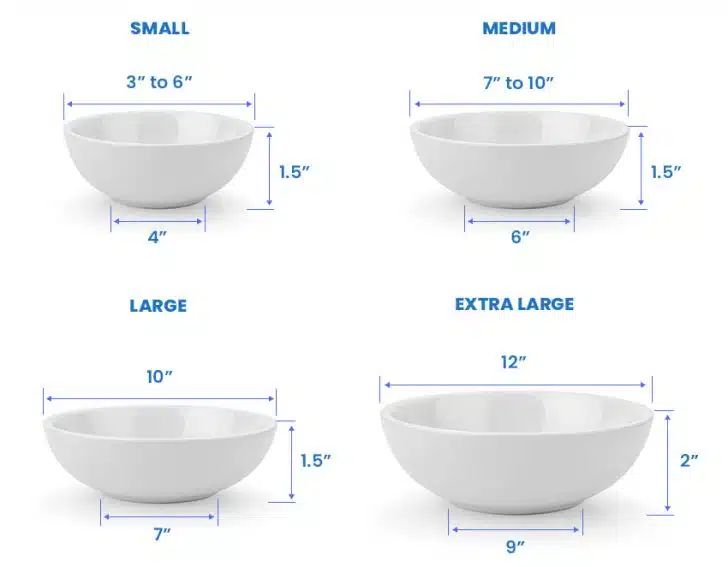
A bowl of cereal is a beloved breakfast staple for many, offering a quick and convenient way to start the day. But have you ever stopped to consider how much cereal truly constitutes a “perfect” bowl? While personal preference plays a significant role, understanding serving sizes and factors that influence portion size can help you achieve cereal bowl nirvana.
This article will delve into the world of cereal consumption, providing a comprehensive guide to determining the ideal amount of how much cereal is in a bowl. We’ll explore standard serving sizes, examine factors like cereal type and milk preference, and discuss how your desired crunch level can impact your portion. By the end, you’ll have the knowledge to craft the perfect cereal bowl every time.
Cereal Serving Size Guide
The foundation of any successful cereal bowl lies in understanding recommended serving sizes. While individual preferences vary, a standard serving size typically falls between 1/2 and 3/4 cup. This range allows for flexibility while ensuring you’re consuming a reasonable amount of cereal per bowl. Remember, exceeding this guideline can lead to excessive calorie intake and potentially disrupt your daily nutritional balance.
When checking the nutrition label on your favorite cereal box, pay close attention to the “serving size” listed. This information provides a standardized measurement for comparing different cereals and calculating your daily caloric intake. Keep in mind that serving sizes may vary between brands and types of cereal, so always refer to the specific product’s label for accurate guidance.
Factors Affecting Cereal Amount
Beyond standard serving sizes, several factors can influence how much cereal you choose to put in your bowl. These individual preferences shape your cereal experience and contribute to finding the perfect amount for your taste.
Cereal Type
The type of cereal you select plays a significant role in determining portion size. For example, lighter cereals like puffed rice or corn flakes tend to be more airy and require larger quantities to achieve a satisfying fullness. Conversely, denser cereals like granola or bran flakes pack more volume into a smaller serving, allowing for a heartier bowl with less overall cereal.
Hunger Level
Your current hunger level can also influence your cereal portion. If you’re feeling particularly hungry, you might naturally gravitate towards a larger bowl to satisfy your appetite. Conversely, if you’ve recently eaten or are not overly hungry, a smaller serving size may be sufficient.
Activity Level
Individuals with higher activity levels often require more calories to fuel their bodies. This can translate to larger cereal portions to ensure adequate energy intake throughout the day. Conversely, those with less active lifestyles may find that smaller servings suffice to meet their caloric needs.
Types of Cereal and Portion Sizes
Different types of cereal lend themselves to varying portion sizes. Understanding these general guidelines can help you determine the ideal amount for your preferred cereal:
- Light & Airy Cereals (Puffed Rice, Corn Flakes): 1-1.5 cups
- Denser Cereals (Granola, Bran Flakes): 3/4 – 1 cup
- Sweetened Cereals: 1/2 – 3/4 cup
- High-Fiber Cereals: 1/2 – 3/4 cup
Remember, these are just general guidelines. Ultimately, the best portion size depends on your individual preferences and dietary needs.
Milk Preference and Cereal Ratio
The type of milk you choose can also influence your cereal amount. Whole milk tends to be thicker and more filling, allowing for a smaller cereal-to-milk ratio. Conversely, skim milk is thinner and may require a larger cereal portion to achieve the desired consistency.
Experiment with different milk types and ratios to find what best suits your taste and preference. Some individuals prefer a higher milk-to-cereal ratio for a creamier bowl, while others enjoy a more substantial cereal base.
Desired Crunch Level
Your preferred level of crunch can also impact your cereal portion. If you crave a satisfyingly crunchy bowl, you may opt for a larger amount of cereal to ensure each bite delivers that desired texture. Conversely, if you prefer a softer, less crunchy experience, a smaller serving size might be more suitable.
Conclusion
Determining the perfect amount of how much cereal is in a bowl is a highly personal journey influenced by factors like cereal type, milk preference, and desired crunch level. While standard serving sizes provide a helpful guideline, ultimately, the best portion size is the one that satisfies your taste buds and nutritional needs.
